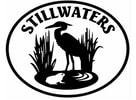Salt Marsh
Salt marshes are found around the world, everywhere from New Zealand to France, the East Coast of North America, and even here in the Pacific Northwest: we have our very own salt marsh along Carpenter Creek! Although you can’t play on the salt marshes, they make wonderful background scenery, especially toward sunrise or sundown.
There are a few common elements of salt marshes that classify each of them. First of all, and possibly the most important and universal aspect of them, salt marshes are found in coastal intertidal zones. Intertidal zones are the areas where water meets land, thus named “inter-tidal” or “between the tides”. Salt marshes specifically are coastal, flooded by tides of salt water or brackish water (saltier than freshwater, less salty than seawater). Plants in salt marshes are typically terrestrial (they grow on land) but must be salt-tolerant to survive the conditions of the marsh. These often serve to trap the sediments brought in by the tides, returning some of the nutrients to the land. In general, salt marshes are fairly flat.
A majority of the plant life that grows in salt marshes is smaller, shrubbier and grassier in nature. These can often grow tall because of the lack of dominant shady species in the immediate area. The taller shrub-life allows for many species of birds and animals to take refuge in and to raise their young, providing a habitat with some protection along with sustenance (salt marshes house many insects and can even bring up fish who get stuck in pools).
There are a few common elements of salt marshes that classify each of them. First of all, and possibly the most important and universal aspect of them, salt marshes are found in coastal intertidal zones. Intertidal zones are the areas where water meets land, thus named “inter-tidal” or “between the tides”. Salt marshes specifically are coastal, flooded by tides of salt water or brackish water (saltier than freshwater, less salty than seawater). Plants in salt marshes are typically terrestrial (they grow on land) but must be salt-tolerant to survive the conditions of the marsh. These often serve to trap the sediments brought in by the tides, returning some of the nutrients to the land. In general, salt marshes are fairly flat.
A majority of the plant life that grows in salt marshes is smaller, shrubbier and grassier in nature. These can often grow tall because of the lack of dominant shady species in the immediate area. The taller shrub-life allows for many species of birds and animals to take refuge in and to raise their young, providing a habitat with some protection along with sustenance (salt marshes house many insects and can even bring up fish who get stuck in pools).

